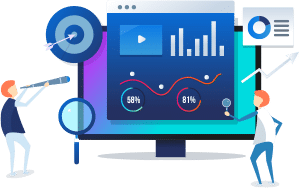Demand Sensing: The Smart Way to Manage Demand Volatility in the Current Crisis
The COVID-19 pandemic has introduced a lot of volatility in consumer demand. The frequent demand fluctuations across different regions and categories have made life extremely difficult for Demand and Supply planners to forecast and do smarter Sales and Operations Planning (S&OP). Currently, most planners in CPG, FMCG, and Technology sectors are trying to translate the downstream data with minimal latency to understand what is being sold, who is buying the product (attributes), and the impact on demand shaping patterns. The underlying objective is to craft a profitable demand-response system through internal processes for demand translation (the process of translating the independent or channel demand) to dependent demand (requirements by supply processes).
During the crisis, most of the large enterprises in the CPG, FMCG, and Technology sectors consulting with us have been producing a daily statistical forecast at the item-location level measured on a 7-day lag period, and aligning their available supply to an improved demand signal by leveraging our Demand Sensing platform. In addition, the S&OP Manager reviews the S&OP plan on a weekly basis and uses the demand sensing forecast during team meetings to make mid- to long-term capacity decisions. The group reviews market deviations and makes decisions on demand shaping based on the supply chain strategy and compares the demand sensing forecast with the mid-to-long term strategic forecasts coming from their APO (Advanced Planner and Optimizer) system. This process enables them to make optimal near-term production line schedules and near-term load-capacity decisions.
Based on our experience working with some of the large supply-chain-driven organizations, improving demand management capabilities is a continuous improvement process; however, it’s not an isolated improvement project to improve forecast accuracy. While successfully implementing demand sensing does improve forecast accuracy, it is how you capitalize on that improved forecast accuracy that really matters. Unless an organization benefits from improved accuracy, there is no ROI.
- Here are some of the benefits our clients have experienced using Demand Sensing:
- A significant (>35%) reduction in forecast error at the weekly item location level
- Reduction in demand latency (the period of time to understand demand changes) from monthly to weekly; this helped their Logistics team reduce safety stocks and improve responsiveness to demand
- Resolution of past inventory problems as a result of better plant scheduling
- Reduced customer service issues
In the end, Demand Sensing seems like a simple concept on the surface but can get complicated quickly. Do not focus on the integration of the demand signals. Instead, focus on the synchronization of the demand signal across time periods based on a master data framework that allows channel sensing and demand translation.
Demand management is only one capability required to develop an integrated end-to-end supply chain, but it is often the catalyst for change and continuous improvement. Having a better forecast is one thing; understanding how to use it to manage inventory, cost, and service is what creates value.


Sushant Ajmani
Sushant is a seasoned digital analytics professional who has been working in the industry for over 23 years. He has worked with over 180+ global...Read More

Don’t miss our next article!
Sign up to get the latest perspectives on analytics, insights, and AI.








